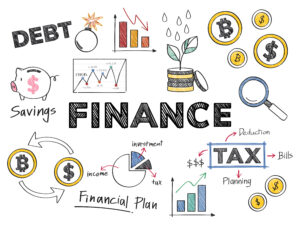The Ultimate Guide to Loans: Types, Benefits, and Smart Borrowing Strategies
Why Loans Matter in Today’s Financial World
Money plays a central role in our lives, and sometimes our savings just aren’t enough to cover big expenses like education, housing, or emergencies. That’s where loans step in. Loans are not just a lifeline when money is tight—they can also be a powerful financial tool if used wisely.
In this ultimate guide to loans, we’ll explore the different types of loans, their benefits, risks, and the smartest strategies to borrow without falling into a debt trap. Whether you’re considering a personal loan, a student loan, or even eco-friendly financing like green loans, this article will give you the clarity you need to make informed decisions.
2. What is a Loan and How Does It Work?
At its core, a loan is money borrowed from a lender that must be repaid with interest over a set period. Loans come with three essential components:
- Principal – the original amount you borrow.
- Interest – the cost of borrowing money.
- Repayment schedule – the timeline and structure for paying it back.
There are two major categories:
- Secured loans – backed by collateral (like a home or car).
- Unsecured loans – based only on your creditworthiness.
👉 For everyday borrowing tips, check out our guide on personal loan hacks to borrow smart and save big.
3. Types of Loans You Should Know
Loans aren’t one-size-fits-all. Let’s break down the most common loan types and when you might use them.
3.1 Personal Loans
- Flexible use: medical bills, debt consolidation, travel, or emergencies.
- Usually unsecured but may have higher interest rates.
👉 Learn more in our detailed guide on personal loan hacks.
3.2 Student Loans
- Designed to cover tuition, books, and living expenses.
- Repayment often starts after graduation.
👉 See our student loan survival guide for repayment tips.
3.3 Home Loans / Mortgages
- Long-term loans for buying property.
- Often secured against the home itself.
- Interest rates depend heavily on credit scores.
3.4 Auto Loans
- Used to purchase vehicles, including electric cars (EVs).
- Some lenders offer eco-friendly incentives for EV buyers.
👉 Read our guide on green loans for eco-friendly financing.
3.5 Business Loans
- Support for startups, expansion, or cash flow management.
- May be secured or unsecured, depending on lender policies.
3.6 Green Loans (Eco-Friendly Financing)
- Specifically for solar panels, EVs, or sustainable home projects.
- Growing in popularity as more people go green.
👉 Learn more in green loans: financing solar panels, EVs, and eco-projects.

4. Pros and Cons of Taking a Loan
✅ Advantages
- Access to funds when you need them.
- Helps build credit history if repaid on time.
- Can support life-changing investments like education or a home.
❌ Disadvantages
- Risk of debt cycle if not managed carefully.
- Interest and fees add to the cost.
- Missed payments damage credit scores.
5. Loan Application Process: Step-by-Step
Applying for a loan doesn’t have to feel overwhelming. Here’s how to approach it:
- Check your credit score – higher scores = better rates.
- Compare lenders – interest rates, fees, terms.
- Understand the fine print – prepayment penalties, hidden charges.
- Submit documents – income proof, ID, collateral (if required).
- Approval & disbursement – funds are transferred once approved.
👉 Useful outbound resources:
6. Smart Borrowing Strategies (The Heart of the Pillar)
Borrowing isn’t bad—borrowing unwisely is. Here’s how to do it right:
- Borrow only what you need – avoid taking extra “just in case.”
- Build an emergency fund first – so loans aren’t your first option. Check out our guide on why an emergency fund is essential.
- Improve your credit before applying – small improvements = big savings.
- Choose shorter loan terms if possible – higher payments but less interest.
- Read all terms carefully – especially hidden fees.
- Repay early if possible – to save on interest.
7. Repayment Hacks to Save Big
- Automate payments – never miss a due date.
- Switch to bi-weekly payments – pay faster and save on interest.
- Consolidate debt – roll multiple loans into one with a lower rate.
- Snowball vs Avalanche Method –
- Snowball: Pay smallest debts first for motivation.
- Avalanche: Pay highest-interest debts first for savings.
👉 Pair these with our 10 smart ways to save money every month to free up cash for faster repayment.
8. Common Loan Mistakes to Avoid
- Borrowing for luxuries instead of necessities.
- Ignoring the fine print.
- Taking multiple loans at once.
- Not budgeting repayment into your monthly expenses.
9. The Future of Loans: Trends to Watch
- Digital lending & fintech apps – faster approvals, minimal paperwork.
- AI-driven credit scoring – more accurate borrower evaluation.
- Green loans on the rise – governments incentivizing eco-projects.
- Peer-to-peer lending platforms – cutting out traditional banks.

10. Conclusion: Borrow Smart, Build Wealth
Loans aren’t the enemy—they’re tools. Used wisely, they can open doors to education, homeownership, and new opportunities. The secret lies in borrowing smart, repaying responsibly, and always planning ahead.
Want to go deeper? Explore these guides:













Post Comment